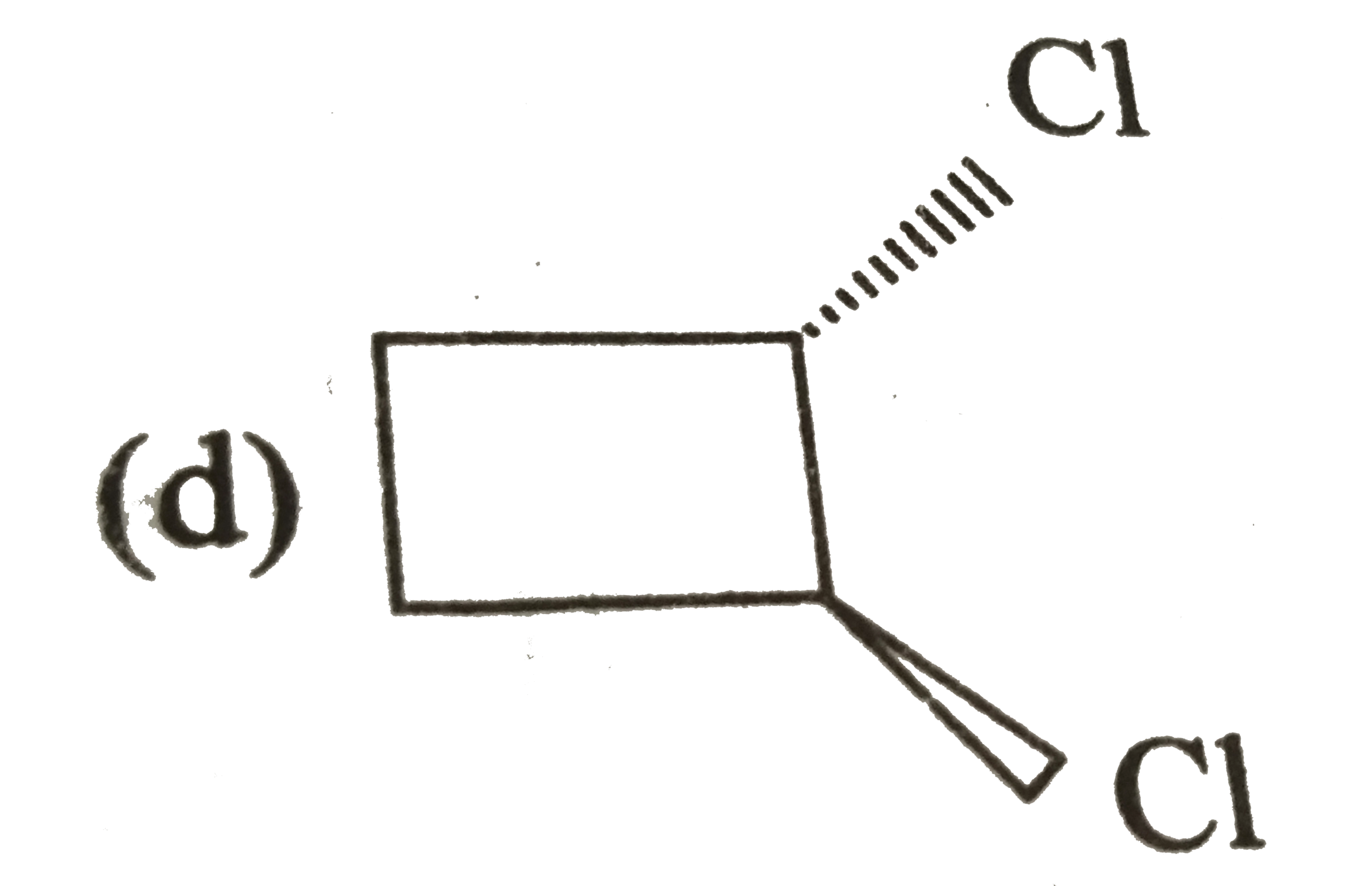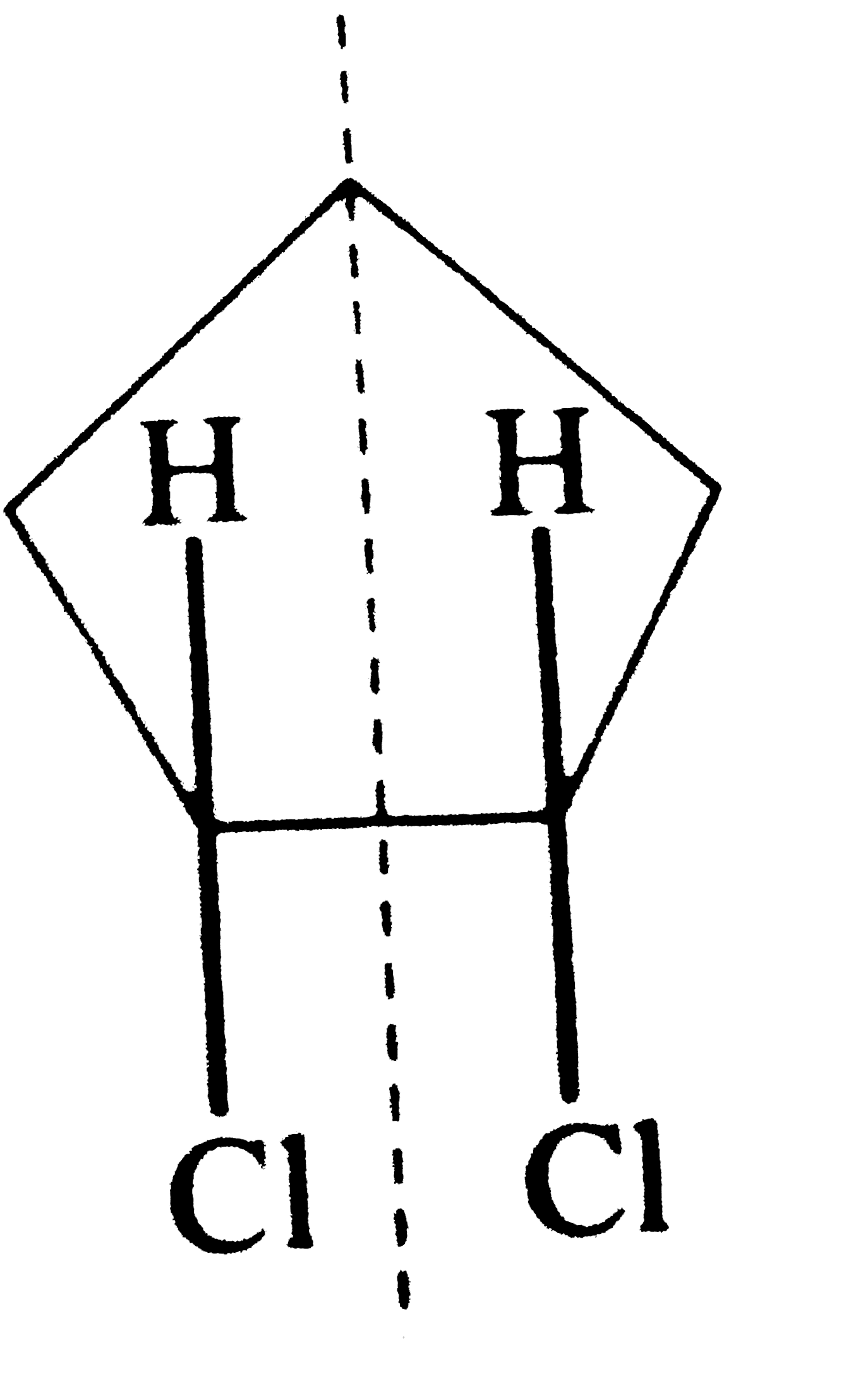Which of the following compounds is optically active?
1-butanol
Isopropyl alcohol
Acetaldehyde
2-butanol
The correct Answer is:D
To determine which of the given compounds is optically active, we need to identify if any of the compounds contain a chiral carbon atom. A chiral carbon is one that is bonded to four different groups or atoms. Let's analyze each compound step-by-step:
Step 1: Identify the Compounds
We have four compounds to analyze:
1. 1-butanol (Compound A)
2. Isopropyl alcohol (Compound B)
3. Acetaldehyde (Compound C)
4. 2-butanol (Compound D)
Step 2: Draw the Structures
- 1-butanol: CH3-CH2-CH2-CH2OH
- Isopropyl alcohol: (CH3)2CHOH
- Acetaldehyde: CH3CHO
- 2-butanol: CH3-CH(OH)-CH2-CH3
Step 3: Analyze Each Compound for Chirality
1. 1-butanol:
- The carbon atoms in 1-butanol are either bonded to two hydrogens or are part of a straight chain. None of the carbons are bonded to four different groups. Thus, it is not optically active.
2. Isopropyl alcohol:
- The carbon atoms in isopropyl alcohol are also bonded to either two hydrogens or are part of a branched structure. There is no carbon bonded to four different groups. Thus, it is not optically active.
3. Acetaldehyde:
- The carbonyl carbon in acetaldehyde is bonded to a methyl group (CH3), a hydrogen (H), and an oxygen (O). However, it is also bonded to another carbon (the carbonyl group), making it planar and not chiral. Thus, it is not optically active.
4. 2-butanol:
- The second carbon in 2-butanol is bonded to four different groups: a methyl group (CH3), an ethyl group (CH2-CH3), a hydroxyl group (OH), and a hydrogen (H). This carbon is chiral, making 2-butanol optically active.
Conclusion
Based on the analysis, the compound that is optically active is 2-butanol (Compound D).
We have four compounds to analyze:
1. 1-butanol (Compound A)
2. Isopropyl alcohol (Compound B)
3. Acetaldehyde (Compound C)
4. 2-butanol (Compound D)
- 1-butanol: CH3-CH2-CH2-CH2OH
- Isopropyl alcohol: (CH3)2CHOH
- Acetaldehyde: CH3CHO
- 2-butanol: CH3-CH(OH)-CH2-CH3
1. 1-butanol:
- The carbon atoms in 1-butanol are either bonded to two hydrogens or are part of a straight chain. None of the carbons are bonded to four different groups. Thus, it is not optically active.
- The carbon atoms in isopropyl alcohol are also bonded to either two hydrogens or are part of a branched structure. There is no carbon bonded to four different groups. Thus, it is not optically active.
- The carbonyl carbon in acetaldehyde is bonded to a methyl group (CH3), a hydrogen (H), and an oxygen (O). However, it is also bonded to another carbon (the carbonyl group), making it planar and not chiral. Thus, it is not optically active.
- The second carbon in 2-butanol is bonded to four different groups: a methyl group (CH3), an ethyl group (CH2-CH3), a hydroxyl group (OH), and a hydrogen (H). This carbon is chiral, making 2-butanol optically active.
Based on the analysis, the compound that is optically active is 2-butanol (Compound D).
Topper's Solved these Questions
- ALCOHOLS, PHENOLS AND ETHERSBook:MHTCET PREVIOUS YEAR PAPERS AND PRACTICE PAPERSChapter:ALCOHOLS, PHENOLS AND ETHERSExercise:PRACTICE EXERCISE (Exercise 2 (MISCELLANEOUS PROBLEMS))
Explore 103 Videos
- ALDEHYDES, KETONES AND CARBOXYLIC ACIDSBook:MHTCET PREVIOUS YEAR PAPERS AND PRACTICE PAPERSChapter:ALDEHYDES, KETONES AND CARBOXYLIC ACIDSExercise:MHT CET CORNER
Explore 21 Videos
Similar Questions
Knowledge Check
Which of the following compound is optically active
AC2H5−OHB(CH3)2CHCH3−ClCCH3−CHClC2H5DCCl2F2Which of the following compound is optically active
A B
B C
C D
D
Which of the following compound s is optically active ?
A1-butanolBEthanolC2-butanolDlsopropyl alcohol
Which of the following compound is not optically active?
View SolutionWhich of the following compound is not optically active?
View SolutionA line which bisects a compound in two equal parts and both parts appear to be the mirror image of each other, such kind of symmetry is known as plane of symmetry

Any molecule that has a internald mirror palne of symmetry cannot be chiral, even thought it may contain asymmetric carbon atoms.
Which of the following compound optically active?
View SolutionWhich of the following compounds loses optical activity due to pyramidal inversion?
View SolutionWhich of the following compounds will be optically active ?
View Solution

